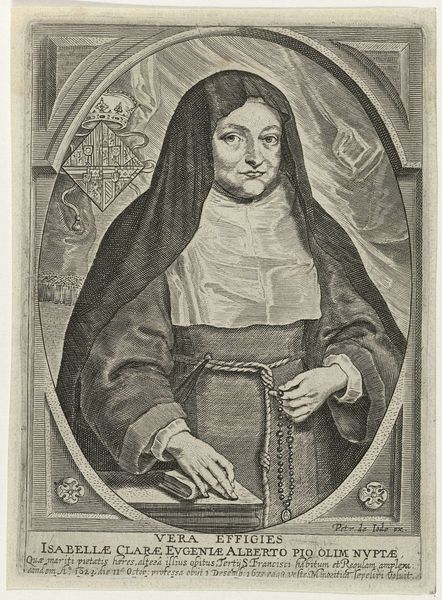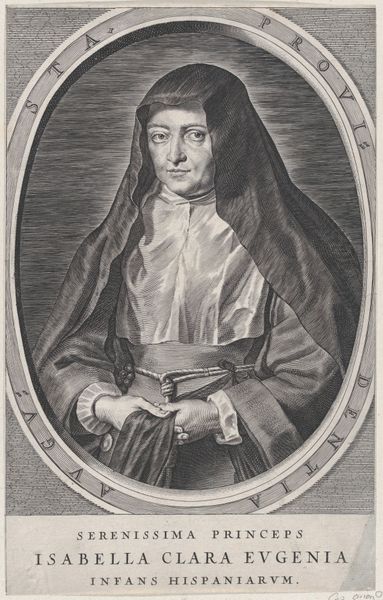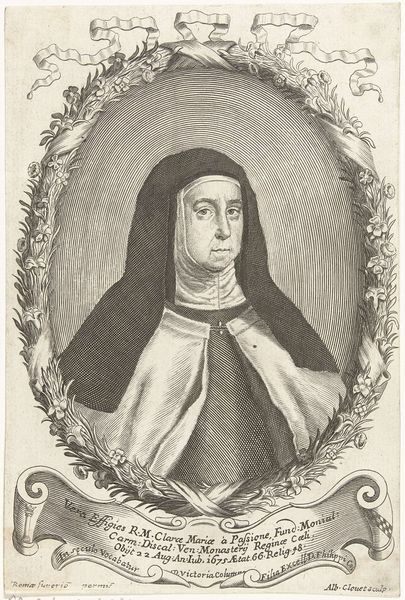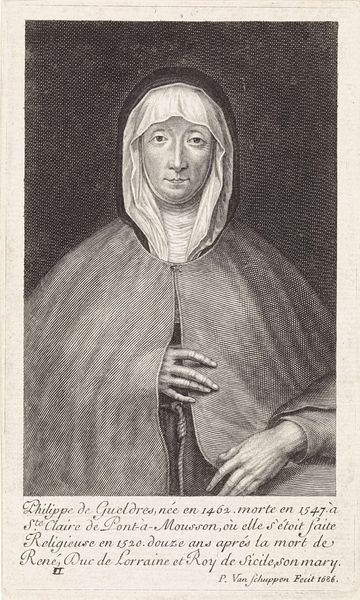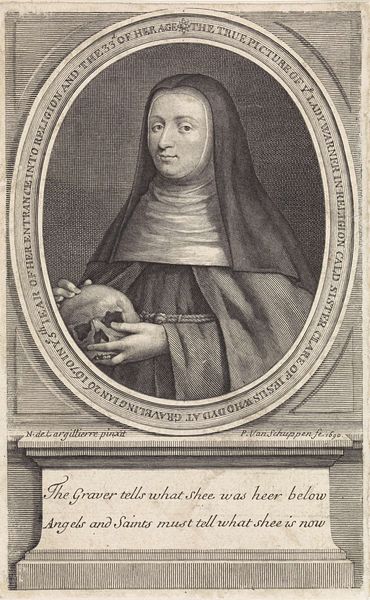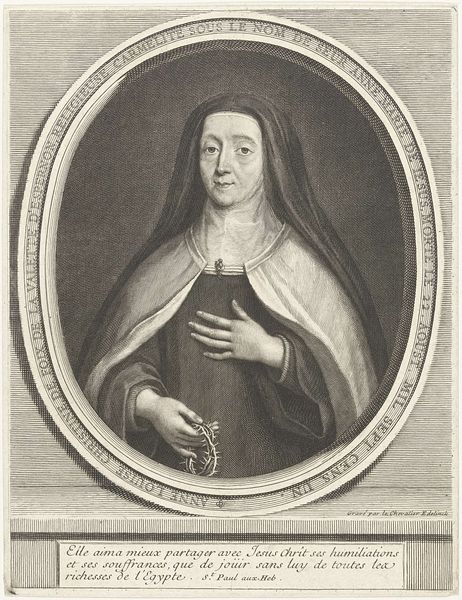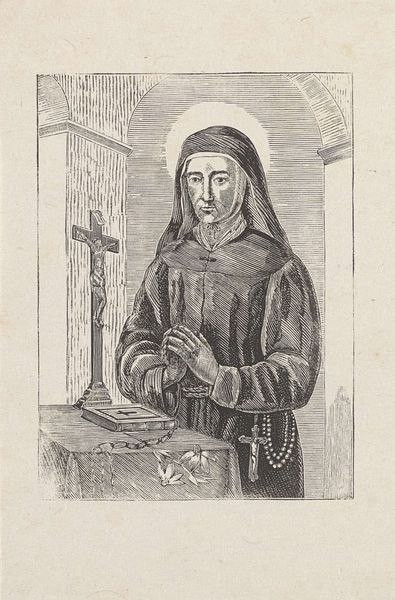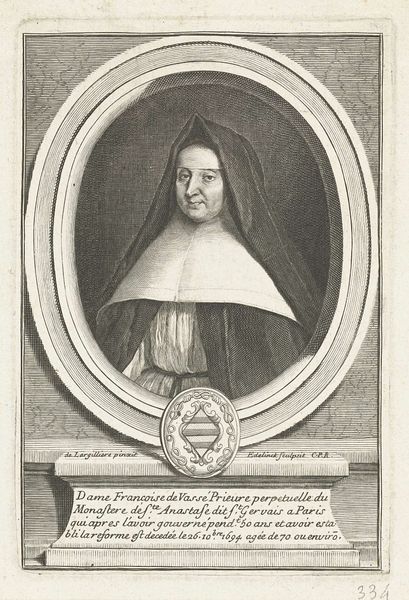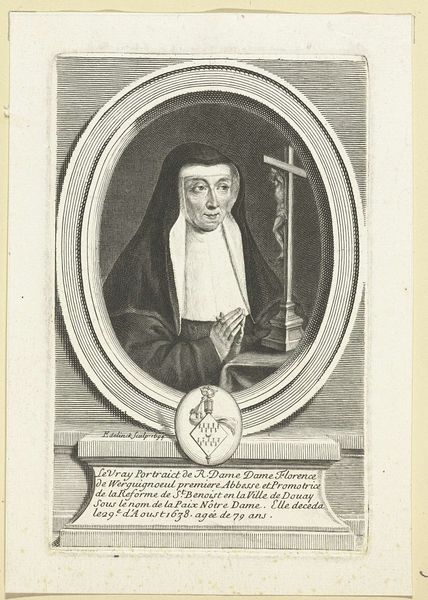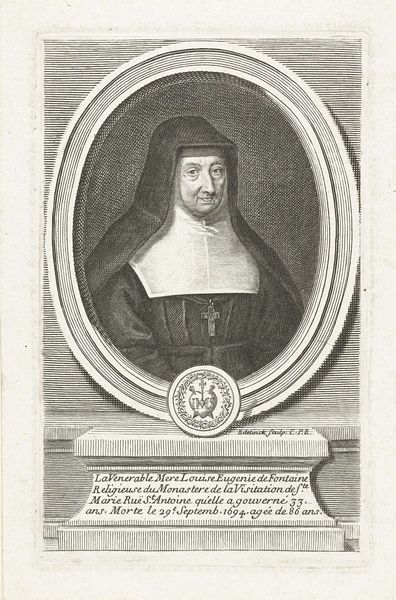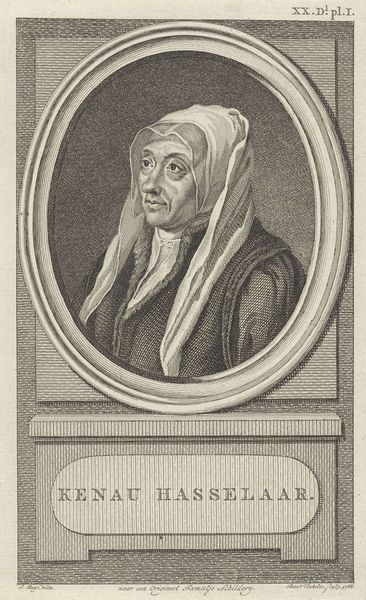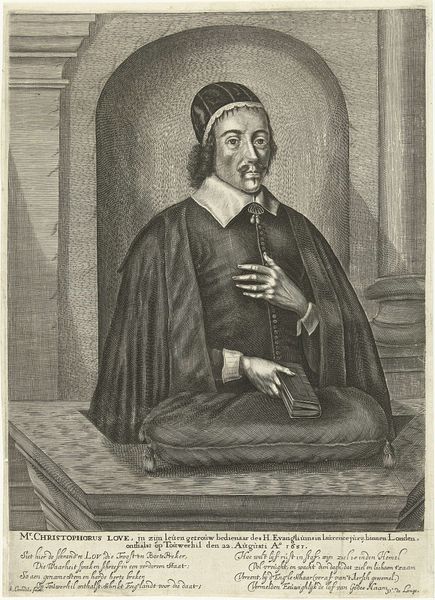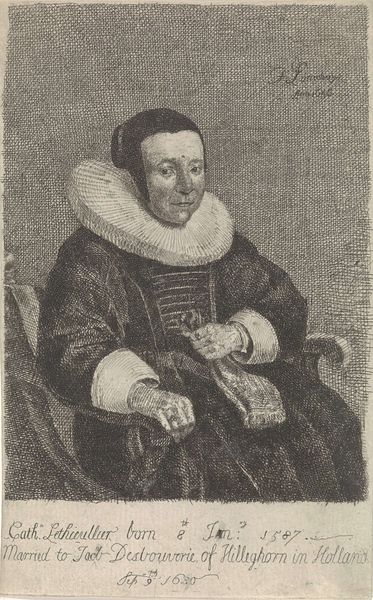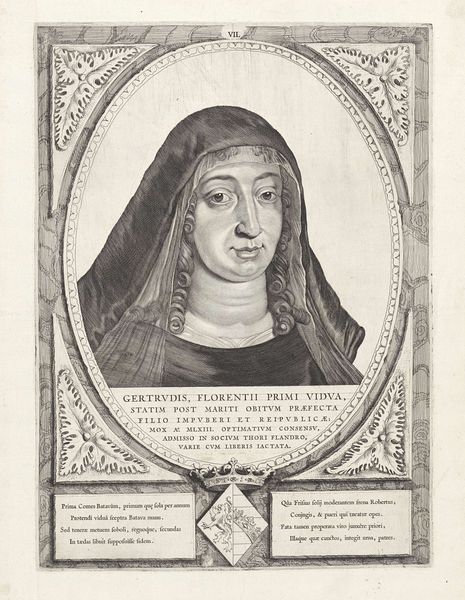
print, engraving
#
portrait
#
baroque
# print
#
old engraving style
#
portrait drawing
#
history-painting
#
engraving
Dimensions: height 206 mm, width 145 mm
Copyright: Rijks Museum: Open Domain
Curator: This engraving, held in the Rijksmuseum collection, offers a portrait of Isabella Clara Eugenia. Though the piece is dated 1604-1670, historical context is critical here, because those dates suggest the print was made during her lifetime or shortly after her death, given her governance of the Spanish Netherlands from 1598 until her death in 1633. It’s after a work by Peter Paul Rubens and engraved by Crispijn van de Passe the Younger. Editor: Well, my first impression is… somber. The stark lines of the engraving really bring out a sense of seriousness, almost a heaviness. The textures, though—the delicate folds of her veil, the pattern behind her—it’s incredible how they capture such detail! But still, there’s something very imposing about her gaze. Curator: Absolutely. The gravitas is intended; her position demanded it. Notice how the engraver contrasts her simple habit with the heraldic shield in the upper left corner. It's about visually communicating power within both the secular and spiritual realms, and we mustn't forget the crucial role of prints in disseminating her image across Europe, carefully projecting Spanish authority. Editor: You can feel it in the very lines of the thing. The cross-hatching used to build the dark shades behind her feels weighty, almost like an oppressive blanket of responsibility settling onto her shoulders. And yet… the almost hidden monogram of "IHS" to the right. A constant reminder of faith? That makes it interesting, as she’s seemingly weighed down, yet anchored. Curator: Indeed, and it shows a brilliant synthesis of religious imagery and secular governance. Consider, too, the strategic advantage she cultivated through patronage of the arts, including having her likeness widely distributed. Prints like these became tools of diplomacy and image control. It served not only as documentation but also to construct and reinforce dynastic power. Editor: Makes you wonder about the true Isabella behind the regal facade! Like, what did she dream about? What silly songs got stuck in her head? History sometimes forgets the beating heart. Curator: Very true, while it’s important to engage our imagination, it’s worth remembering these formal portraits were hardly candid snaps; these kinds of depictions of individuals such as Isabella tell us more about the politics and values of her status rather than any real ‘personality’. Editor: Still, even in its constructed formality, the piece resonates. It makes me consider all the Isabellas lost to history, women of power who juggled faith and their authority. This experience also teaches me not to jump to a ‘first’ impression, which can be a poor interpretation!
Comments
No comments
Be the first to comment and join the conversation on the ultimate creative platform.
